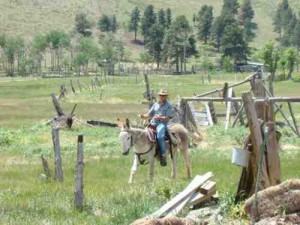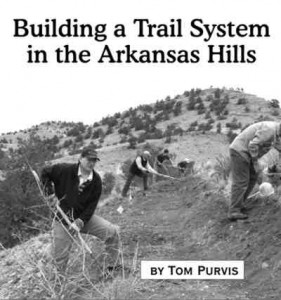Review by Forrest Whitman
History – January 2009 – Colorado Central Magazine
Mountain Mafia – Organized Crime in the Rockies
by Betty L. Alt and Sandra K. Wells
Published in 2008 by Cold Tree Press
ISBN 13: 978-1-58385-274-3
THIS FALL VOTERS IN COLORADO approved 24-hour gambling with a $100 bet limit. During most of the last century there were no limits at all, but gambling was controlled by a somewhat organized crime ring usually called “The Mafia” or “La Cosa Nostra.” Betty Alt and Sandra Wells have written an interesting account of the mountain Mafia from its early days in the 19th century until the legalization of gambling in mountain town casinos. Their findings are somewhat surprising.
While the image of the Mafia has usually been one dominated by violent crime, in southern Colorado that was seldom true. The southern Colorado organization viewed itself as a legitimate business enterprise catering to the wants and needs of the gambling and drinking public. Very seldom were there any shootings and those were almost always within the organization itself.
The southern Colorado Mafia was largely controlled out of Pueblo, but had branch franchises in Wetmore, Salida, Alamosa, and other small towns. During the era of prohibition the group made its money selling bootleg booze, but soon switched to gambling, especially numbers games.
Alt and Wells did extensive research on the illicit liquor trade and found it to have been highly organized. The small town of Aguilar, for instance, had miles of tunnels emanating from the Fourth of July Saloon; there famous Mafia heads like Pete Carlino and the Donna families brewed and sold millions of gallons of whiskey.
The authors draw a fairly sharp line between Southern Colorado operators and Denver Mafia groups. The Denver Mafia, especially in the later years, was controlled by the Smaldone family. “Checkers” and “Flip Flop” Smaldone were regarded as the heads. They operated largely out of Gaetano’s, which is still a leading restaurant just north of Denver’s downtown. The Denver group was noted for violence. In fact, one rival for control, Pete Carlino, was gunned down as were several other chiefs. Checkers and Flip Flop did eventually die in their own beds at ripe old ages, but they were the exceptions in the Denver group.
Interestingly enough, the Mafia was noted for contributing handsomely to charitable organizations. They funded institutions for the socially disadvantaged including Laredon Hall in Denver and many Catholic charities.
Alt and Wells do an especially nice job of describing the mountain Mafia’s colorful brushes with the law. One of my favorite accounts concerns a group operating out of the 96 Drive Inn in Pueblo and the infamous Rockvale House in Custer County. A murder, allegedly committed by a leader of that group, one Spinnizi, was eventually tried before Judge Blickhahn, a sitting circuit judge from Alamosa. The accused said he’d shot a band member purely by accident during a fight outside the 5 Queens Club in Pueblo. Many witnesses testified that the murder had, in fact, been accidental. Whether or not the judge bought this, we do not know. The D.A.’s prosecutor, Matt Kikel, was baffled when the judge acquitted the defendant because “there was no clear chain of evidence from the gun to the chest of the deceased.” The D.A. appealed, but the case was sent back to the same judge who reached the same conclusion.
[InContentAdTwo]
Another interesting legal case concerned “Whiskers” Incerto, who was most likely from Canon City. Whiskers was a legendary cook. While in the Pueblo County jail he made such good spaghetti that various members of the legal community went there to dine. Apparently this got him an early release. Whiskers was eventually sent to state prison for bribing a judge. After being there only a few months he developed throat cancer. He was taken to a hospital for an operation and returned with his throat wrapped in a cloth and barely able to speak. A physician named Dr. Black asserted in writing that Whiskers did not have long to live, and Governor Love commuted his sentence. But after his release, Whiskers was seen running poker games and looking fit as a fiddle. The prison warden looking into the matter and could find no Dr. Black nor any indication that an operation had been performed. Whiskers encountered the warden some time later and thanked him for his hospitality.
The beginning of the end for the Colorado Mafia came in 1972 when the state legislature made gambling a felony punishable by a $15,000 fine and a maximum of five years in prison. Prior to that, gambling was a misdemeanor in most cities, and wasn’t illegal in unincorporated areas. Once the clients began to get arrested, participation in the games declined. But the Mafia still ran numbers games, usually out of legitimate businesses. A men’s store in Salida has been mentioned as well as a bar in Alamosa, and, of course, the Rockvale House in Custer County and a private home in Wetmore. But with the death of Flip Flop and Checkers in 1992 and 1998 the Mafia era was over in Colorado.
Today, organized crime’s hold on gaming is over and Coloradans can visit legal casinos in Black Hawk, Central City, Cripple Creek and the Four Corners areas. But Alt and Wells colorful stories and history could make the gambling experience more fun. This book would make a good reading for anyone who enjoys gambling.


